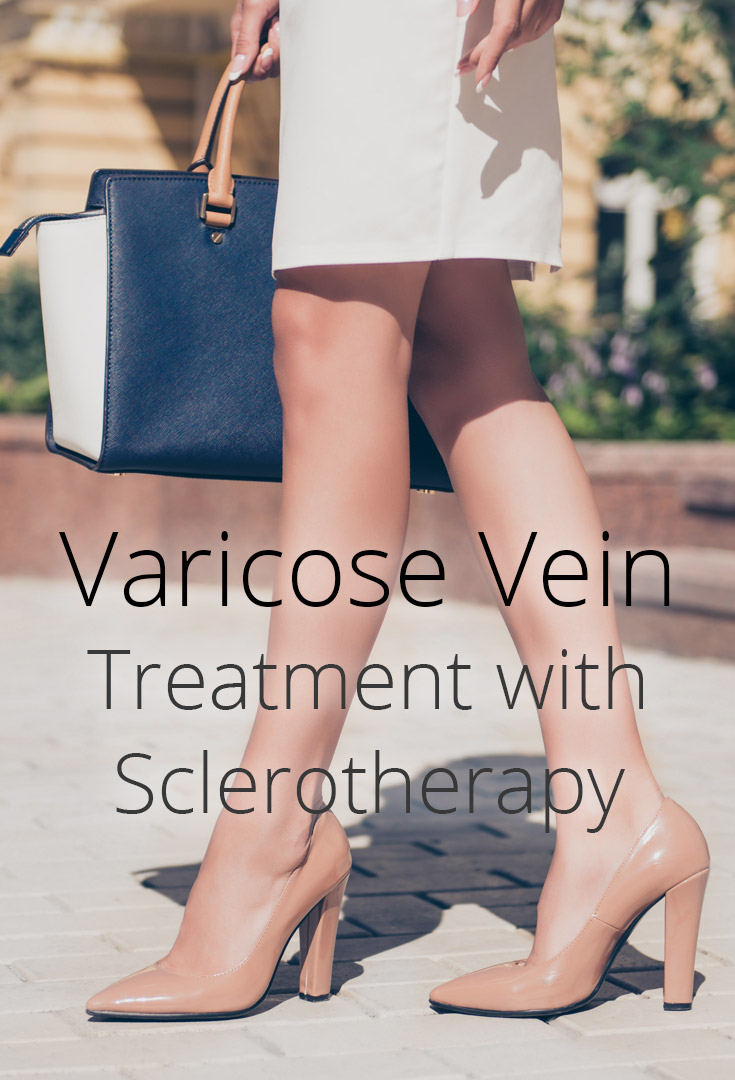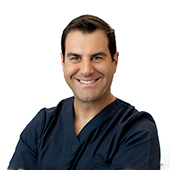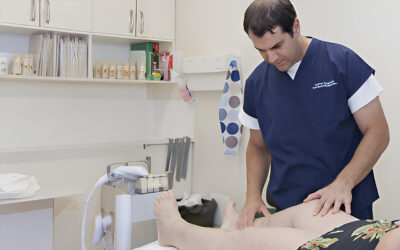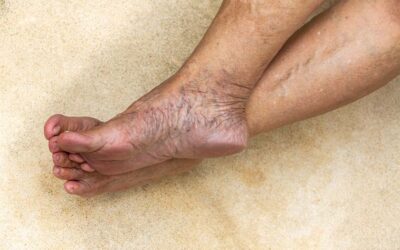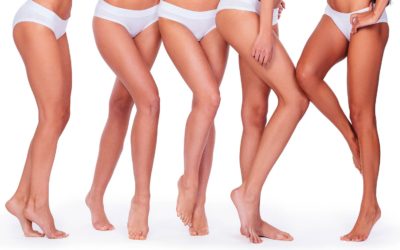The symptoms of varicose veins may vary from patient to patient. In many cases, there may not be any symptoms at all. At the very least, visibly bulging veins will be present and if the condition progresses, patient may experience swelling, pain, itching, skin breakdown, and more.
The symptoms of Venous Disease can be debilitating and mobility limiting, but varicose veins can also knock your self-confidence. You might keep your legs covered up, instead of venturing out in shorts, skirts or dresses, concerned that visible veins may cause unwanted attention.
Fortunately, varicose veins can be treated without having to undergo an invasive operation under general anaesthetic. Today there are multiple non-invasive procedures designed to have you in-and-out of treatment relatively quickly, and permanently resolve the cause, signs and symptoms of varicose veins.
Sclerotherapy is one such treatment. It comes in two forms, direct vision sclerotherapy and ultrasound guided sclerotherapy. Direct vision sclerotherapy (DVS), as the name suggests, treats varicose veins that are visible on the skin to the naked eye. These are injected with a sclerosant foam which reroutes the blood through other blood vessels and causes the diseased vein to collapse, harden, and heal. The doctor may utilise magnification goggles to help guide the very fine Sclerotherapy needle into the visible veins but in most cases, no assistance is necessary.
With ultrasound guided sclerotherapy (UGS), the same sclerosant foam is injected into the veins, but the fundamental difference here is that an ultrasound machine is used to help guide the needle into slightly deeper veins and not just the veins visible on the surface of the skin. Ultrasound guidance is a fundamental core component of a phlebologist’s practice. A combination of ultrasound guided, and Direct Vision Sclerotherapy is required in almost all cases of varicose veins and patients should ensure that the doctor they are seeing is not only trained to use a Duplex Ultrasound but has it present for use during the treatment.
So, what’s so good about sclerotherapy to treat varicose veins?
It’s Effective
This treatment approach for varicose veins is very effective. Dr Paraskevas has been treating patients with ultrasound guided sclerotherapy or direct vision sclerotherapy for over a decade, and sometimes uses this in combination with another treatment such as endovenous laser ablation (EVLA) to treat the veins deeper inside the leg. If you view our before and after page, there are many great examples of the results our patients have received using UGS or DVS.
It’s Non-Invasive
Sclerotherapy is non-surgical, no stitches are required, no general anaesthetic is required. Your phlebologist uses ultrasound guidance to find and treat the diseased veins via a small needle. The ultrasound guidance allows them to monitor the effect of each injection during the treatment, while also ensuring there is no damage all adjacent structures in the leg.
It only takes a few minutes
Your phlebologist will only require a few minutes to complete the procedure. Patients can generally resume their regular routines just a few hours after the sclerotherapy session. Each patient will be given specific advice before and after a varicose vein procedure.
We treat the root cause, not just the symptoms. All treatments at Vein Health are designed to restore the leg to normal circulation. With the source of the problem treated, patients see resolution of their symptoms like: soreness, pain after walking/standing a long time, swelling, itching, etc.
Key Takeaways
- Ultrasound guided sclerotherapy uses ultrasound to guide a small needle to the problem varicose veins and injects a sclerosant foam to collapse and heal the vein.
- Sclerotherapy is effective, non-invasive, and a relatively quick in-clinic varicose vein treatment.
